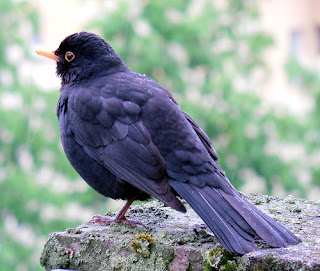These past few weeks I've been creating assemblages and collages. Here is one of my latest endeavors, done on a 11 x 14 inch canvas panel. My inspiration was the white flowers with their rich brown centers and the chartreuse leaves.
To create the bird, I used this image found on Pixabay.
I opened it in Gimp, and cut it out with the Free Select Tool. I recolored it with green and gold using the colorize tool in Gimp. Here is the result:
I also tried another method. I used the desaturate tool to make the bird lighter. I printed it out, trimmed around it with scissors and painted the feathers with green, yellow and gold acrylic paint. I thought this one looked better in my collage so this is the one I chose. The branch (painted gold) and leaves came from my yard.
Then I printed and trimmed around it with scissors and added some gold acrylic paint.
I needed something to fill in the space above and below the butterfly. I created a swirl design and printed 2 of them onto some tracing paper and painted them gold. After the paint dried, I wet along the edges so they'd tear out easily.
To add visual interest, I glued some gold-painted screening material in 3 of the corners. The wooden tag in the right lower corner has the words, "God has a good plan for my life." It adds a nice touch and reinforces the main idea in the Bible verse.




















